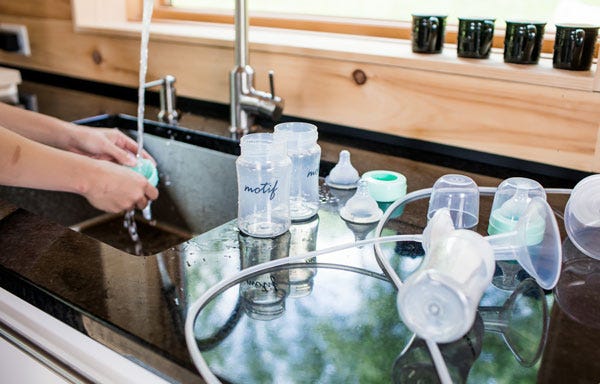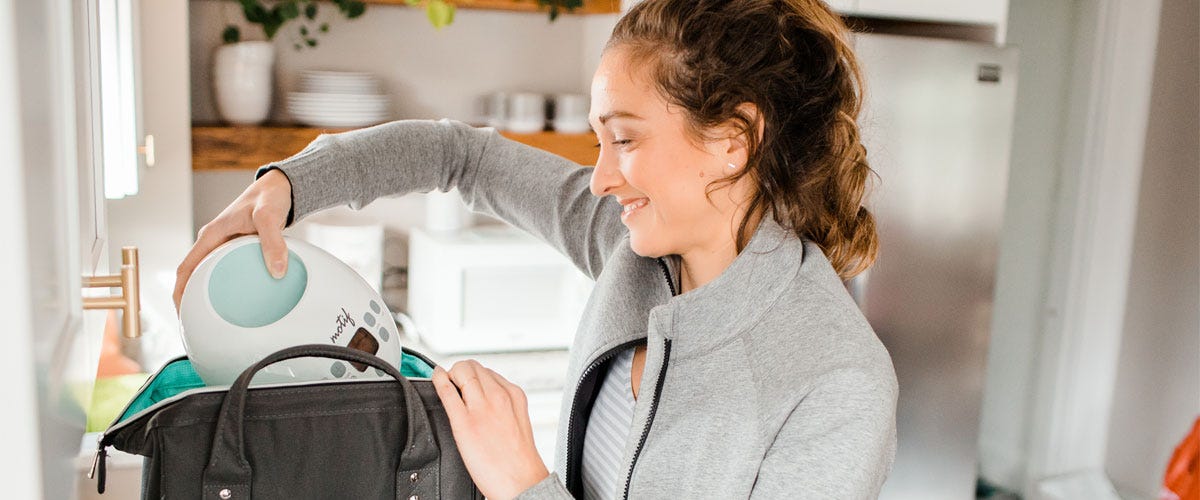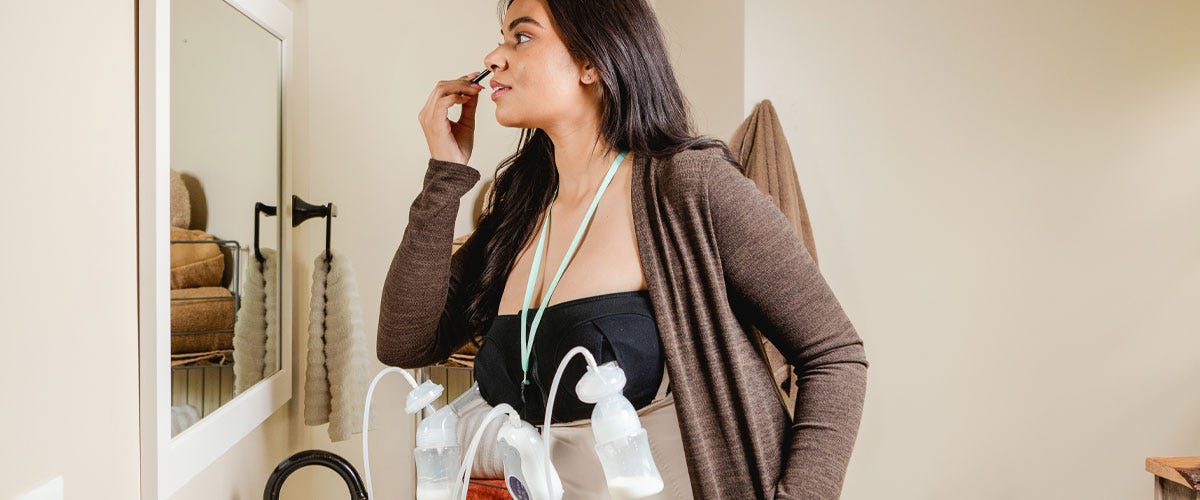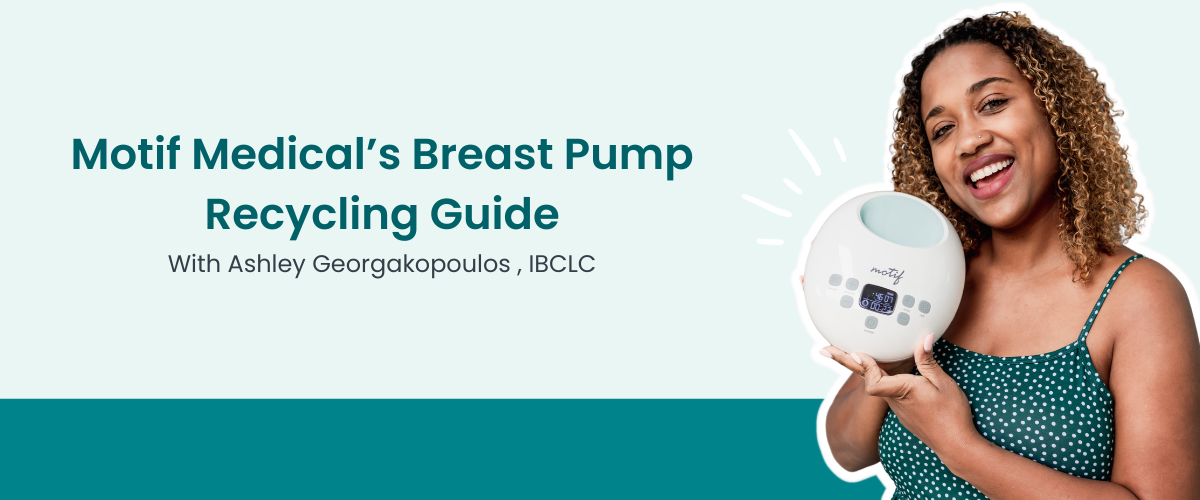The moment you get your breast pump starts the beginning of your breast milk journey. From unboxing it, learning how to use it, late-night pumping sessions, supporting breastfeeding goals, and more, you and your pump have a lot of work to do together. That's why it's crucial to take care of your breast pump by regularly replacing certain parts so it can take care of you during your entire breast pumping journey.
Why Do I Need To Replace Breast Pump Parts?
The key to keeping your breast pump in top working order involves regularly placing breast pump parts. As you use your pump, the hard-working parts can become worn out, stretched, and frayed. It can also be a playground for bacteria and mold, as small cracks, residue build-up, and other compromises make it difficult to clean and keep clean.
Breast pump replacement is also important. Too often, we see pump sharing or using the same pump for subsequent pregnancies. Breast pumps should be single-use and used only for up to a year.
Avoid Low Milk Supply and Low Breast Milk Output
Worn-out breast pump parts are one of the leading causes of lower milk supply.
This is because worn-out parts can lead to a decrease in breast pump suction. As a result, mothers will often assume that there is an issue with their breast milk supply or that their pump is broken. However, the first thing you should do if you notice a decrease in suction is to check on your pump parts. Check for gaping valves, whether using duckbill valves or flat white valves, as this decreases the vacuum suction strength. Proper flange sizing is important, as is the integrity of the flange. Build up of residue, cracking, or warping may impact the ability to form a vacuum seal on the breast.
Unfortunately, the simulation of low supply from low output may turn out to be an actual low supply problem over time if not adequately removing milk. Address issues and complications early on!
Prevent Mold and Bacterial Growth
Also, by frequently breast pumping and sanitizing your supplies the parts that become stretched and worn out, they may become cracked or form crevices that make it easier for residue, bacteria, and mold to build up in. New parts help keep your breastmilk cleaner!
Replacing the breast pump also helps to keep unwanted microbes out of the picture by having the closed filtration system work with full integrity.
Game Plan for Spare Parts and Emergency Back-ups
Having an extra set of breast pump parts can be beneficial for moms as it helps make sure they have a spare, clean set to use or spare items to leave at work. Then if something breaks, there's no need to rush out to the store to see if they have that particular replacement part in stock, and you won't have to wait for your replacement part to arrive in the mail. Keep your spare parts, such as extra milk collection bottles and breast pump flanges, or ones you dedicate for keeping at work, in your breast pump bag, tote, cooler bag, or a particular container to help you remember.
Check with the breast pump manufacturer first, for replacement and spare parts, along with the pump kit your pump is accompanied with. Many companies will include a few spare parts with the electric breast pumps, such as extra flanges or milk collection bottles. Companies like Amazon, may have ample parts available, like replacement valves, that need to be replaced more often and can ship it quickly.


Which Breast Pump Parts Need To Be Replaced And When?
Breast shields, also known as flanges, valves, and backflow protectors, will need to be replaced at some point. Some more frequently than others, but this heavily depends on how often the pump will be used. Keep your pump kit in top working order with these guidelines:
Full-time or Exclusive Pumping - Pumping only or for a majority of feedings.
As Needed:
- Tubing- Tubing should only have airflow, and in a closed filtration system, clean airflow. This means we don't wash or sanitize the tube. They are difficult to dry to avoid mold growth. If accidentally washed with other parts, stretched out or otherwise damaged, tubing rarely has to be replaced. Replacement tubing is a great extra part to keep on hand for emergencies.
Every 4-6 Weeks, or signs of wear and tear
Breast Pump Valves
- Silicone Duckbill Valves- check for puckering or gaps in the seal
- Flat Flap Valves- check for warping or not longer laying flat against the base
Every 3-6 Months, or signs of wear and tear
- Backflow Protectors- or when you notice tearing, warping, rips, or discoloration
- Breast pump accessories purchased for cushioning in-between sizing in the breast shield.
- Manual Breast pumps- typically not used for larger volume needs, so the life and duration of a manual pump is shorter. Whether silicone or BPA free plastic design with self-pumping mechanism, keep an eye out for residue build-up, warping, and flange integrity
Every 6 Months, or signs of wear and tear
- Flanges/ Breast Shields - change when there is a build-up of residue, cracks, tears, or warping
- Collection bottles
- Adapters (where relevant)
Every 12 Months
Your electric breast pump! Pump engines are only designed and tested to last for up to a year. For full, optimal efficiency and efficacy, replace yearly. Be sure to register with the breast pump warranty upon obtaining your pump in case replacement is needed before 12 months!
Keep in mind, if mostly breastfeeding and only needing to pump occasionally, these guidelines could be stretched some. Less wear and tear means better longevity. Just take note of signs of breakdown in the materials, residue build-up or warping, and have replacement parts accordingly!
What Do I Do With My Old Breast Pump Parts?
In general, your breast pump can not be recycled as it could pose a health risk to other moms due to the residue that builds up inside. Also, the motors are only designed to last a year, so a used breast pump could lose suction or come with other problems.
However, a few of the supplies can be recycled. Here is the breakdown:
Tubing - Your tubing cannot be recycled and should be thrown away.
Duck valves - Dispose of your duck valves in the trash; they cannot be recycled.
Backflow protectors - The exterior clear plastic parts can be placed in your recycling bin, but the white membrane should be thrown away.
Flanges - Breastshield flanges and connectors can be recycled in your regular recycling bin!








